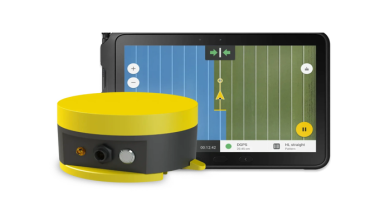
As the agricultural industry evolves with technology, sustainability, and animal welfare in mind, education must follow suit. Modern agricultural classrooms go far beyond textbooks and lectures. They blend science, business, environmental stewardship, and real-world skill-building into dynamic environments where students can experience the agricultural cycle firsthand.
In this article, we’ll explore what makes a modern ag classroom effective, how educators are rethinking traditional teaching approaches, and which tools and themes are most important for equipping students with future-ready agricultural knowledge.
Designing a Productive Agricultural Learning Space
The layout of an ag classroom is more than just tables and chairs—it’s a space where theory meets hands-on experience.
Flexible Lab-Classroom Hybrids
Many schools are adopting hybrid rooms that allow both lectures and lab work. Adjustable tables, portable sinks, and washable flooring support everything from soil testing to animal handling workshops.
Incorporating Outdoor Learning
School greenhouses, gardens, and small barns extend learning into the field. These spaces are essential for teaching plant science, small livestock care, and sustainable growing practices.
Integrating Storage and Safety
Agricultural education often includes tools, chemicals, and biological samples. Purposeful storage—such as lockable cabinets, labeled shelving, and designated chemical-safe zones—helps keep students safe and the environment organized.
Core Topics for Today’s Agricultural Curriculum
A well-rounded agricultural education program touches on much more than farming. It teaches students to think critically about food systems, animal care, and environmental responsibility.
Animal Science and Livestock Management
Whether a program includes full-scale animal care or simulations, understanding the needs of livestock remains a cornerstone. Nutrition, breeding, shelter, and veterinary basics give students a foundation for both hobby and career farming.
Soil Science and Sustainable Land Use
Students investigate how soil composition, erosion, and nutrient cycles impact farming. They often test soil samples and explore organic amendments, crop rotation, and cover cropping as part of sustainability lessons.
Agribusiness and Marketing
Learning how to manage a farm also includes understanding markets, pricing, logistics, and ethical sourcing. Students may practice creating mock farm budgets or branding materials for their own fictional products.
Technology in Agriculture
GPS-guided tractors, moisture sensors, and AI-powered harvest planning are no longer futuristic—they’re present-day tools. Schools are introducing agricultural tech literacy through both hardware demos and software simulations.
Empowering Students Through Practical Experience
Real-life experience matters. When students can touch, see, and do, they retain more and develop skills they’ll use on farms, in labs, and beyond.
Classroom Animals and Daily Care
Mini-barns or animal stations within a school building allow for hands-on lessons in feeding, cleaning, and behavior observation. Even caring for small animals like goats or chickens teaches consistency and empathy.
Crop Planning and Harvest Cycles
School gardens are no longer extracurricular—they’re essential labs. Students get involved in every stage of crop production, from soil prep to pest control to harvest.
Simulated Farm Environments
Some classrooms use models or software to simulate the daily operations of a working farm. This approach supports students in planning feed schedules, managing expenses, and making decisions about health or productivity.
Partnering with Local Farms
Field trips and internships offer invaluable perspective. By spending time on working farms, students learn about regional crops, seasonal challenges, and equipment operation.
Tools That Elevate Agricultural Instruction
The right tools enhance every part of the learning process. While some are high-tech, others are time-tested for a reason.
Common Tools for Agricultural Classrooms:
- Soil test kits for nutrient and pH analysis
- Incubators and heat lamps for poultry units
- Animal feeding bottles, thermometers, and weighing scales
- Hydroponic systems for small-scale plant science projects
List: Unexpected Items That Boost Ag Learning
- Whiteboards for tracking crop growth or feeding logs
- Laminators to protect field guides and record sheets
- First aid kits tailored for both humans and animals
- GoPro cameras to document animal behavior or greenhouse changes
Elevating Lessons with Environmental Focus
Agriculture and sustainability go hand in hand. Today’s students are particularly aware of the environmental impact of food production, and they seek ways to improve it.
Conservation Practices in the Classroom
Instructors may explore how composting, rainwater collection, and pollinator gardens support ecological farming. These practices also teach students responsibility for their space and waste.
Wildlife and Ecosystem Awareness
Lessons in biodiversity help students understand how pollinators, pests, and native plants influence farming. Using outdoor spaces, students can set up observation areas or track local species.
Climate and Seasonal Planning
Using local weather data, students learn how to plan plantings, protect livestock, and adapt practices for drought or heavy rainfall. These skills prepare them for the unpredictability of modern farming.
Encouraging Career Pathways in Agriculture
Agricultural education should also be a gateway to future careers—both on the farm and off.
Beyond Traditional Farming
Not all students will become farmers. Career discussions can include roles like veterinary techs, agri-marketers, soil scientists, and equipment mechanics. Each plays a vital role in the food system.
Certifications and Continuing Education
Programs may offer students opportunities to earn certifications in animal handling, pesticide safety, or machinery operation. These credentials build confidence and employability.
Entrepreneurship in Agriculture
From creating CSA (Community Supported Agriculture) boxes to marketing homemade products, students are often inspired to launch their own ag ventures. Lessons in budgeting, branding, and sales give them a strong start.
Fostering Curiosity with the Right Resources
Curiosity is the root of good agricultural education. With the right tools and teaching styles, students can grow confident in their ability to care for animals, land, and communities.
List: Easy Wins for Making Ag Lessons More Interactive
- Role-playing customer conversations at a farmer’s market
- Conducting “farm product of the month” taste tests
- Hosting a school harvest festival or livestock showcase
- Comparing traditional tools vs. modern alternatives
One great example of essential resources used in classrooms and small farms includes dairy supply kits that offer hands-on practice in milking techniques, sanitation, and animal care. Whether used in a live demo or as a take-home activity kit, these tools help bridge the gap between the classroom and the barn.
Educators looking to enhance their programs with practical materials often turn to trusted sources for dairy supply equipment that’s tailored for student use. From milk testing strips to udder wipes and inflations, each tool helps reinforce the importance of cleanliness, animal health, and operational efficiency.
Conclusion: Cultivating the Next Generation
Agricultural classrooms today must do more than teach—they must inspire. Through real-world experience, modern tools, and a focus on sustainability, students are better prepared to face the challenges of tomorrow’s agricultural landscape. Whether tending school gardens, analyzing soil data, or using a simulated milking station, students become more than learners—they become future stewards of the land.




